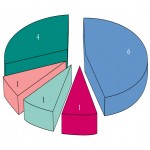Editorial: What is the optimal length of time for SNM testing?
The authors are to be commended for their unique investigation of an extended stage 1 SNM test period. To our knowledge, no other series has included a minimum 4-week duration and microbiologic testing. Optimal duration for the test phase has not been elucidated and initial responses are likely compounded by a short-term placebo effect that may dissipate after time. Knowledge of when maximal improvement occurs would define a population of true responders and reduce implant failure rates. This series shows the feasibility of an extended test phase in a small cohort, but does not identify the optimal length of time for testing.
One must question how many responders are in the 2- to -4 week interval and if such patients would do as well with earlier implantation. Current testing with permanent leads and externalized hardware is cumbersome and not always convenient for activities of daily living, especially showering. Furthermore, knowing the sampling interval used by the authors to assess response and the time at which the majority of patients reached the established implant criteria could clarify the time needed for maximal response. In this small cohort, however, the difference would fail to show significance.
As the authors note, a low stage 2 failure rate is important in an era with rising concern over health care expenditure, but it generates questions on what to do for responders
who have symptomatic improvement >50% but <70%. Do we risk not helping an individual who has 50% improvement in order to reduce stage 2 failures, and how do we justify making this quality-of-life decision? The low stage 2 failure rate in this study may have resulted from the strict criteria for stage 1 success, specifically a 70% or greater response, and not necessarily the prolonged test phase.
Notably, there were no infections in this series despite an extended stage 1 test phase. This is considerably lower than the 5–7% infection rate reported in the literature (Urology, Eur Urol). Perhaps the degree of hygiene and antibiotic regimen contributed to the lack of infectious complications, but concern remains that such results are not generalizable. Infectious events not captured in this series may become evident with a larger sample size and surely the rate will be greater than zero. Granted, the results of this study add to our knowledge of SNM, it is not conclusive that the outcomes can be applied to the population at large, and further evidence from randomized trials are needed to identify the balance between benefits and risks associated with an extended test phase.
Brian K. Marks and Sandip P. Vasavada
Center for Female Urology and Reconstructive Pelvic Surgery, Glickman Urological and Kidney Institute, Cleveland Clinic, Cleveland, OH, USA


